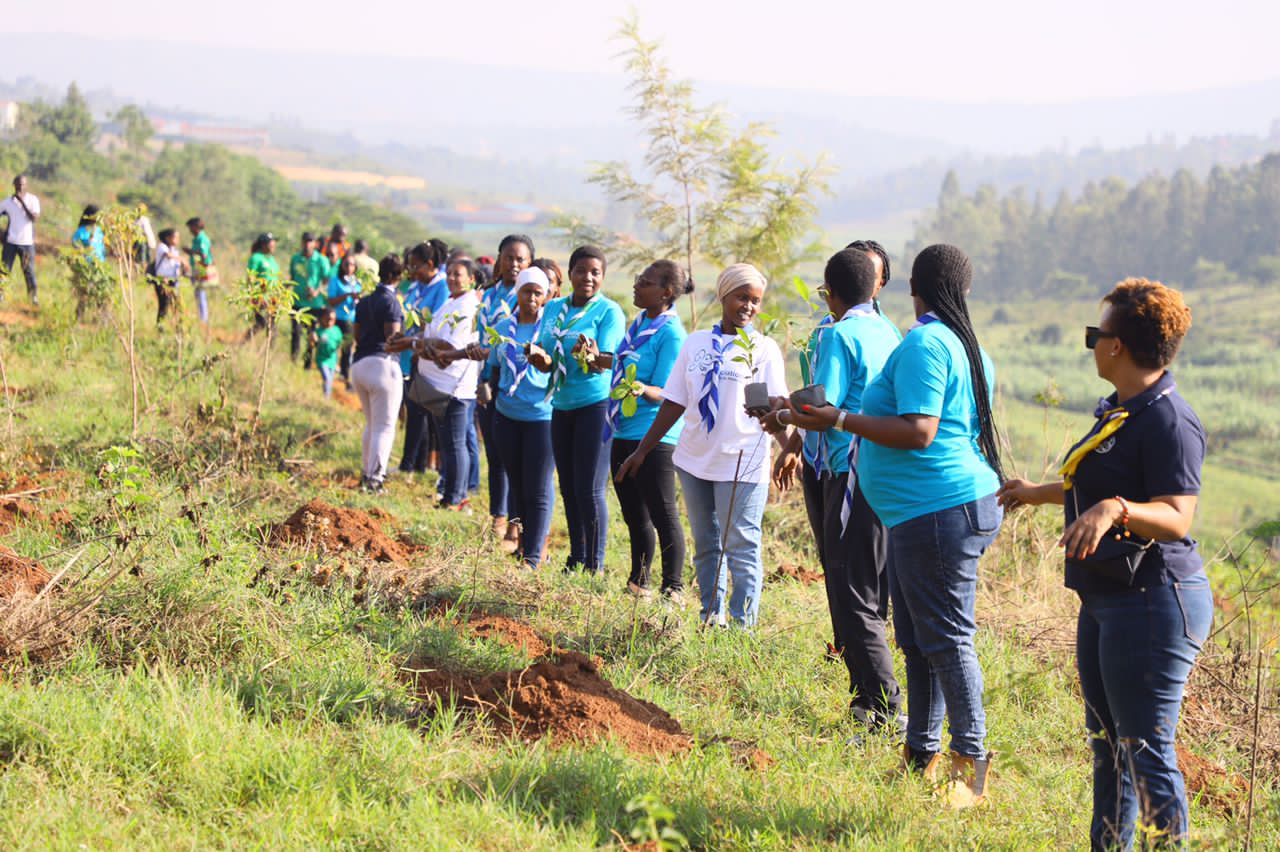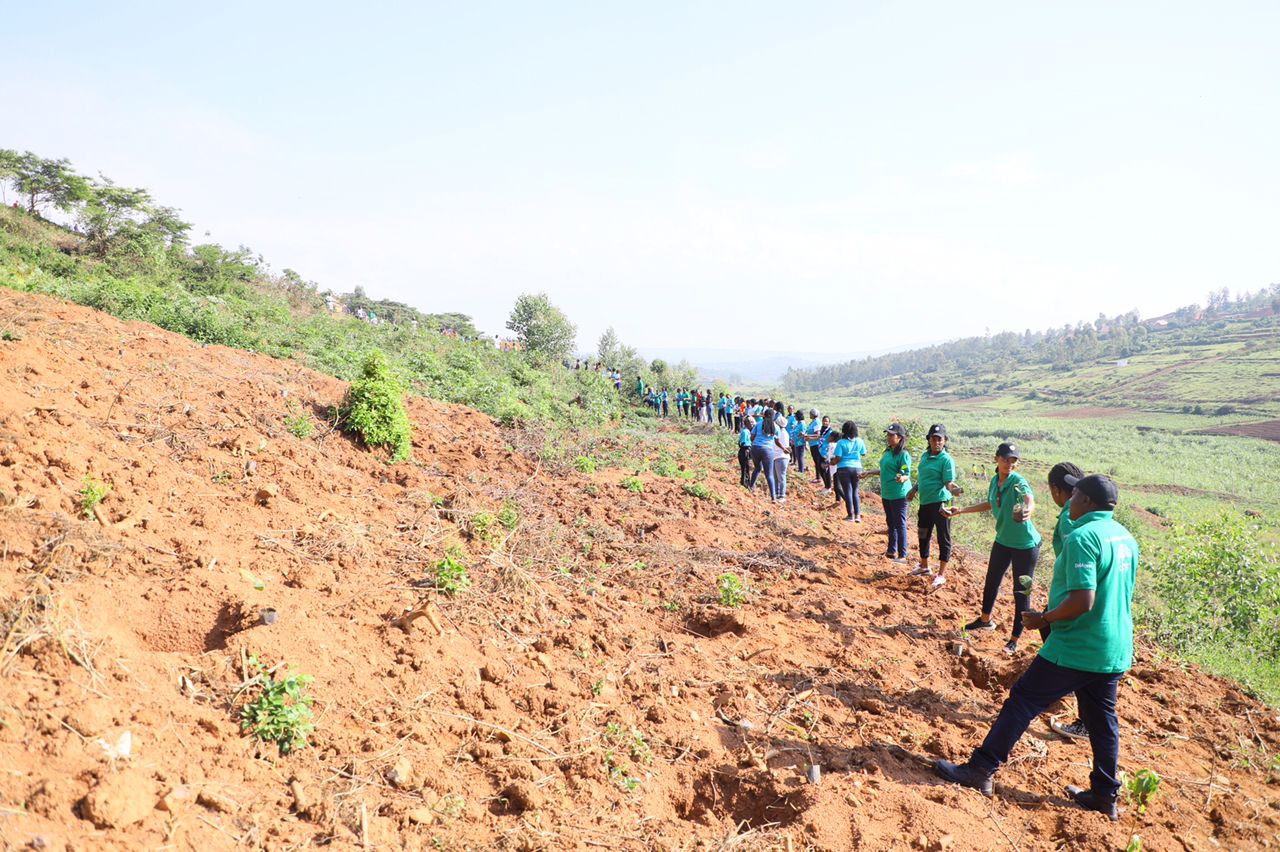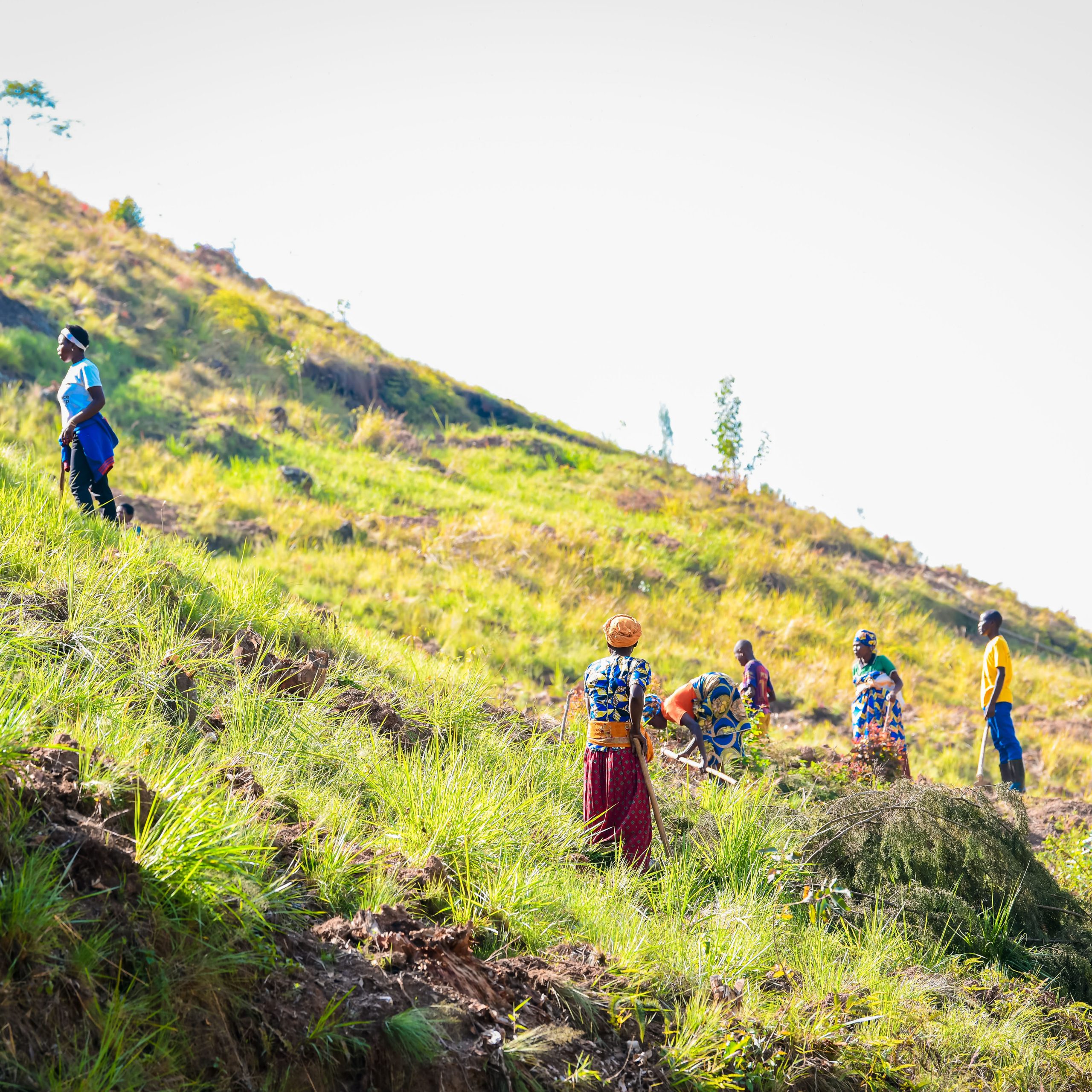
People participating in a tree planting exercise during Umuganda. Rwanda has set ambitious targets to increase forest cover.
Currently, Rwanda is in the middle of a rainy season, and a new tree planting season for 2022/2023 is here.
To further a fight against climate change effects, more than 36 million trees will be planted to increase forest coverage, prevent erosion and clean the air people breathe.
It marks the 47th anniversary of National Tree Planting Day, or NTPD, organized by the Ministry of Environment and the Rwanda Forestry Authority.
Today, tree planting season was marked at Kigali Economic Zone, under the theme “Plant a Tree, Save the Future.”
Today, five hectares of land at the Special Economic Zone were planted with indigenous tree species as part of the launch of forest planting season 2022/2023 with the aim of reducing air pollution and soil erosion, increasing forest tree cover and boosting climate change.
Countrywide, tree planting was also celebrated at the village level, and coincided with monthly community work, commonly known as Umuganda.
“When we plant trees, we invest in the future. Trees are one of our greatest allies in the fight against the climate crisis, the biodiversity crisis and the air pollution crisis. This Forest Planting Season, I encourage all Rwandans to plant a tree and save the future. Plant at least three trees in your garden, your school or your community,” Dr. Jeanne d’Arc Mujawamariya, Minister of Environment said.
During this year’s season, a total of 26,227,930 agroforestry seedlings, 7,609,374 classic forest seedlings, 1,601,931 fruit trees and 1,014,400 bamboo trees will be planted.
In the City of Kigali only, 20 hectares of forest will be rehabilitated while 44,660 native tree seedlings and 191,714 fruit trees will be planted.
It is season of dedications to maintaining existing forests and increasing community involvement and ownership in forest restoration, according to Ministry of Environment.
It is also an opportunity to highlight the role of partners and stakeholders to boost productivity, impact and sustainability in the forestry sector.
The Ministry of Environment says that to promote agroforestry, trees were planted along contour lines and terraces created on farmland in collaboration with communities.

It also aims to ensure the sustainability of Rwanda’s forest planting programme, trees will be planted to expand agroforestry or woodlots.
During the planting exercise, citizens were advised to plant fruit trees in their gardens and on agricultural land to improve food security.
The tree planting campaign started in 2011, with Rwanda’s commitment to bringing two million hectares of land under restoration by 2030 through the Bonn Challenge.
Today, 30.4% of Rwanda’s surface area is covered by forests. The government is working with a range of partners to conduct forest and landscape restoration to meet the country’s commitment under the Bonn Challenge.
Bonn Challenge Momentum
A recent study on a global challenge to plant trees found that some nations, like Rwanda, have surpassed their goals while others, like Guatemala, have not fully realized their ability to restore forests.
A review of the Bonn Challenge, in which nations voluntarily increased their commitment to planting trees to mitigate the effects of climate change, and the publishing of the report coincided on 2nd September 2020.
The International Union for Conservation of Nature (IUCN) and the Federal German Ministry for the Environment announced the Bonn Challenge in 2011, with the goal of restoring 150 million hectares by 2020 and 350 million hectares by 2030.
Since then, 61 countries, 8 states, and 5 associations have accepted the Bonn Challenge, pledging to plant more than 210 million hectares as part of the forest landscape restoration (FLR) project and to go forward with the planning and execution of restoration.

Rwanda is looking to plant trees on slopes to increase forest cover.
The “Restore Our Future” report highlights the untapped potential for participating nations to use initiatives to restore forest landscapes to increase their climate ambition and jump-start economic recovery through the creation of jobs and other advantages following the COVID-19 pandemic.
For instance, 117 of 166 nations (70%) have not yet established quantifiable targets from the forest and land use sector related to the restoration of forest landscapes to absorb Carbon Dioxide (CO2) (NDCs).
It also demonstrates that, out of the 166 NDCs examined, 128 nations included FLR-aligned aims, demonstrating their understanding of the importance of restoration in the forest and land use sectors in the fight against climate change. However, only 30% of NDCs contained quantifiable targets.
Rwanda was praised by the IUCN as one of just a few nations that had succeeded in demonstrating that reforestation goals might be met.
According to IUCN, Rwanda was the first nation to pledge to restore “border-to-border” forest landscapes.
“Its ambitious Bonn Challenge commitment to bring 2million hectares under restoration by 2030 is proportionally the highest commitment to date – representing 82% of national land,” IUCN said in a statement, then.

